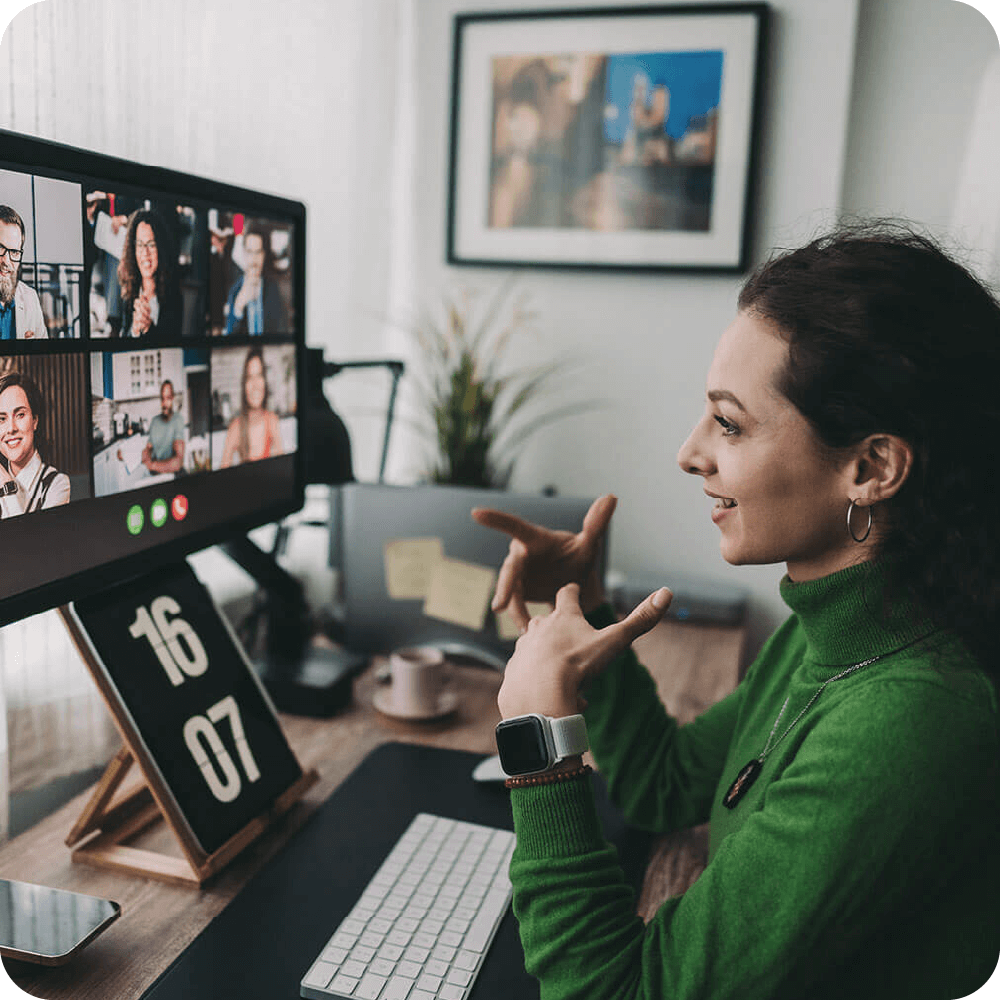IA Insights > Blog
Webinar Recap: Facilitation in a Tech-Enabled World
Webinar Recap: Facilitation in a Tech-Enabled World
Our recent webinar took a close look at how facilitation is changing in today’s tech-filled workplaces. We had a thoughtful panel including our special guest Brian Tarallo from Lizard Brain, a lively group of participants, and plenty of practical ideas. Here are some of the top takeaways we think learning leaders, HR professionals, and managers will find especially useful.
If you'd like to watch the full recording, check it out here.
1. Technology Keeps Evolving, but People Still Make It Work
AI is the latest shiny object, but tech tools have been changing how we collaborate for decades. Through all of that change, one thing has stayed true: it’s people who drive real progress. A facilitator’s job is still about helping people work together more effectively, no matter what tools they’re using.
2. Don’t Let the Tech Lead the Way
Start with your process. What needs to happen in the conversation? What are you trying to accomplish? Choose your tech after that. It’s easy to get distracted by all the options out there, but the best tools are the ones that support your goals, not shift your focus.
3. Facilitators Make Tech Decisions Too
You don’t need to be a tech expert, but you do need to be intentional. As a facilitator, you get to decide how (and if) a tool is used. The right question isn’t “Is this tool cool?” It’s “Will this help the group stay clear, focused, and productive?”
4. Try the Open–Narrow–Close Model
This simple structure helps teams stay on track:
- Open the conversation to explore ideas and hear different views
- Narrow the focus to sort through options
- Close by agreeing on decisions or next steps
- It works with or without tech, but certain tools (like digital whiteboards) can really help clarify things during each phase.
5. Some Tech Helps, Some Doesn’t
Participants mentioned tools like Mural, Miro, and Mentimeter as helpful. On the flip side, bad audio, camera-off meetings, and confusing tech setups can really slow things down. In most cases, simpler tools and clear instructions go a long way.
6. AI Can Be a Brainstorming Buddy
AI can speed up idea generation and help get past blank page syndrome. Just remember: it’s not always accurate. You’ll want to double-check what it gives you and make sure it fits your team’s needs.
7. People Need Time to Get Comfortable with AI
A lot of folks are trying out AI tools on their own but not using them at work yet. Leaders can help by making space to talk about what feels useful, what feels risky, and how teams want to explore AI together.
8. When Tech Fails, Keep Going
One of our panelists had a tool glitch mid-session. They pivoted and moved right along. It was a great reminder that facilitation doesn't always go as planned, especially when tech is involved. Be prepared to pivot. Staying calm and keeping people engaged matters way more than making sure every link works.
9. Facilitation Is Mostly Human, a Little Bit Tech
One panelist summed it up this way: facilitation is 95% people skills and 5% technology. Tools can help, but your ability to connect, guide, and create clarity is what really makes the difference.
The Bottom Line
Facilitation is more than running a good meeting. It’s a form of leadership. It’s how we help people do their best thinking together. And while tools will keep changing, that core role isn’t going anywhere.
If you're looking at improving your facilitation skills learn more about Lizard Brain and the power of visual thinking click here. You can also learn more about IA's Essential Facilitation™ training here.
About IA Team
Interaction Associates (IA) helps leaders and teams think more clearly, collaborate more effectively, and focus on what matters most to their customers, employees, and stakeholders. We provide our clients with practical methods for helping people work better together across functions, viewpoints, and geographies. Since IA introduced the concept and practice of group facilitation to the business world in 1969, hundreds of thousands of individuals have learned The Interaction Method™, a facilitated approach for building understanding and agreement so people can take informed, concerted action.





